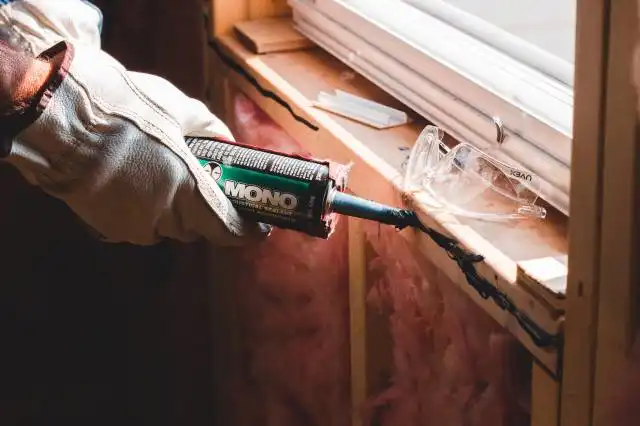Start an Air Duct Cleaning Business
From Dust to Dawn: Discover the Lucrative World of Air Duct Cleaning
| Updated


AIR DUCT CLEANING BUSINESS
If you're on the hunt for a business idea that's both profitable and dusty, then starting an Air Duct Cleaning Business might just be your calling. This business is responsible for clearing out dust, debris, and potential allergens from heating, ventilation, and air conditioning (HVAC) systems at residential and commercial spaces – a chore that most people would happily pay you to handle. Plus, with the increasing importance placed on indoor air quality, this business can truly take you 'from dust to dawn' while contributing to people's health. So, gear up, the only things standing between you and your potential clients are dirty air ducts!
Jump to Business Plan
RELATED BUSINESS IDEAS
Browse ALL Cleaning & Maintenance Services Business Ideas
Discover Your Perfect Domain
Unlock the door to your online success with our hand-picked selection of premium domain names. Whether you're starting a new venture or rebranding an existing one, the right domain can set the tone for your digital presence. Browse through our curated list, each with its unique potential to enhance your brand's visibility and credibility.
AIR DUCT CLEANING MINI BUSINESS PLAN
This a quick reality check to help you identify the strengths and weaknesses of your business concept before you dive in.
Expected Percent Margin:
- Gross Margin: 60-70%
- Net Profit Margin: 20-35%
Earnings Expectations:
- Daily Earnings: $150-$300
- Weekly Earnings: $750-$1,500
- Monthly Earnings: $3,000-$6,000
- Annual Earnings: $36,000-$72,000
Actions to Hit Those Numbers:
Equipment and Tools:
- Initial Investment: At least $5,000-$8,000 for commercial-grade cleaning equipment and van.
Marketing and Customer Acquisition:
- Website: Create a professional website showcasing your services.
- Local SEO: Invest in local SEO for Google search visibility in your service area.
- Direct Outreach: Cold-call local businesses and homeowners.
Sales and Customer Experience:
- Service Quality: Ensure top-notch service to encourage word-of-mouth referrals.
- Follow-ups: Regular follow-ups with past clients for repeat business.
- Scheduling: Efficient scheduling to fit in as many jobs per day as possible.
Cost Control:
- Fuel: Efficient route planning to minimize travel costs between jobs.
- Waste Disposal: Smart waste management to cut down disposal costs.
Business Operations:
- Working Days: Operate 5 days a week, 10 hours a day.
- Job Volume: Aim for 3-5 jobs per day, depending on the size and complexity.
These are generalized estimates and can vary depending on your location, pricing, and business strategy. Always consult with a financial advisor for personalized advice.
NOT WHAT YOU HAD IN MIND? Here are more ideas



Browse ALL Cleaning & Maintenance Services Business Ideas
Grab Your Business Website Name
Before you get caught up in the whirlwind of setting up your business, invest in a domain name. It's a small but significant step that lays the foundation for your brand and makes it easier for customers to find and trust you. Just like you wouldn't build a house without securing the land first, don't build a business without securing your domain name.
"Why? Can't that wait?" Here's why it shouldn't
Step 1: Determine if the Business is Right for You
Breakdown of Startup Expenses
Before starting any business, it is important to understand the startup costs associated with it. When starting an air duct cleaning business, some of the costs to consider include the cost of equipment, such as vacuums, air compressors, and other tools, as well as the cost of insurance and licensing. Additionally, you will need to factor in the cost of marketing and advertising, as well as any other costs associated with getting the business off the ground.
Breakdown of Ongoing Expenses
Once the business is up and running, there are ongoing costs associated with running the business. These include the cost of supplies, such as replacement filters, cleaning solutions, and other materials. Additionally, you will need to factor in the cost of labor, such as employees or contractors, as well as the cost of insurance and licensing. Additionally, you will need to factor in the cost of marketing and advertising, as well as any other costs associated with keeping the business running.
Examples of Ways to Make Money
Once the business is up and running, there are several ways to make money. One way is to offer air duct cleaning services to residential and commercial customers. Additionally, you can offer maintenance services, such as changing filters and cleaning air ducts, as well as offering air quality testing services. Additionally, you can offer other services, such as dryer vent cleaning, that can help generate additional revenue. Finally, you can also offer products, such as air purifiers, to customers to help them improve the air quality in their homes or businesses.
Step 2: Name the Business
Brainstorm potential names When it comes to naming your business, it's important to brainstorm potential names. Think of names that are creative and catchy, but also reflect the services you offer. Consider using words such as “air ducts”, “cleaning”, “services”, or “solutions” in your business name. Additionally, you may want to consider using a play on words or a pun to make your business name stand out.
Check the availability of the name Once you have a few potential names, you'll need to check the availability of the name. You can do this by searching the U.S. Patent and Trademark Office database to see if the name is already taken. Additionally, you'll want to search the web to make sure the name is not already being used by another business.
Register the name Once you have decided on a name, you'll need to register it with the state in which you plan to operate your business. This will ensure that no other business can use the same name in your state. Additionally, you may want to consider registering your business name as a trademark to protect it from being used by other businesses.
Create a logo Creating a logo for your business is a great way to make it stand out. Consider hiring a graphic designer to create a logo that reflects the services you offer. Additionally, you may want to consider creating a tagline or slogan to go along with your logo. This will help customers remember your business and the services you offer.
Step 3: Register the Business
Types of Business Structures
When registering a business, it is important to understand the different types of business structures that are available. The most common types of business structures are sole proprietorship, partnership, limited liability company (LLC), and corporation. Each type of business structure has its own advantages and disadvantages, so it is important to research each one and decide which is best for the business.
Registering with the State
After deciding on the type of business structure, the next step is to register the business with the state. This process will vary depending on the state, but generally it involves filing the necessary paperwork and paying any applicable fees. It is important to make sure that all paperwork is filled out correctly and that all fees are paid in full. Once the business is registered with the state, it is officially recognized as a legal entity and can begin operating.
Step 4: Obtain Necessary Licenses and Permits
Before starting an air duct cleaning business, it is important to understand the licenses and permits required. Depending on the state and local regulations, the business may need to obtain a business license, a contractor’s license, and a hazardous materials license. Additionally, the business may need to obtain permits to operate certain equipment, such as a vacuum truck. It is important to research the specific requirements for the business’s location to ensure that all necessary licenses and permits are obtained.
Research Local Regulations
In addition to obtaining the necessary licenses and permits, it is important to research the local regulations that may apply to the business. This includes researching the local zoning laws, health and safety regulations, and environmental regulations. It is important to understand the regulations that apply to the business to ensure that the business is compliant with all applicable laws.
Contact Local Government Agencies
Once the necessary licenses and permits have been identified, it is important to contact the local government agencies to obtain the licenses and permits. This includes contacting the local zoning board, the health department, and the environmental protection agency. It is important to contact the appropriate agencies to ensure that the business is in compliance with all applicable laws.
Comply with Regulations
Once the necessary licenses and permits have been obtained, it is important to comply with all applicable regulations. This includes complying with local zoning laws, health and safety regulations, and environmental regulations. It is important to ensure that the business is in compliance with all applicable laws to avoid any potential legal issues.
Step 5: Secure Funding
When starting an air duct cleaning business, there are several sources of funding available. The first source of funding is personal savings. This is the most common source of funding for small businesses and can be used to cover startup costs such as equipment, supplies, and licensing fees. Additionally, a business loan from a bank or other financial institution may be available. These loans typically have lower interest rates than personal loans and can be used to cover larger expenses such as a vehicle, additional equipment, and marketing costs.
Another source of funding is investors. Investors are typically individuals or companies that are willing to provide capital in exchange for a share of the business. This can be a great way to secure additional funding without taking on additional debt. Finally, crowdfunding is another option. Crowdfunding platforms such as Kickstarter and Indiegogo allow businesses to raise funds from a large number of people, typically in exchange for a reward or product.
Step 6: Create a Business Plan
Creating a business plan is an important step in starting a business. A business plan is a document that outlines the goals and objectives of the business, as well as the strategies for achieving them. It should include a detailed description of the business, its products and services, the market it serves, and the competitive landscape. It should also include a financial plan, which should include a budget, cash flow projections, and a break-even analysis. Additionally, a business plan should include a marketing plan, which should include a description of the target market, a description of the company’s marketing strategy, and a description of the company’s competitive advantages.
Step 7: Obtain Financing
Sources of Financing
Once the business plan is complete, the next step is to obtain financing. This can be done through a variety of sources, including banks, venture capitalists, angel investors, and government grants. It is important to research the different sources of financing and determine which one is best suited for the business. Additionally, it is important to understand the terms and conditions of the financing, as well as the repayment schedule.
Step 8: Market the Business
Advertising and Promotion
Once the business is up and running, it is important to market the business. This can be done through a variety of methods, including advertising, public relations, and social media. Advertising can be done through print, radio, television, and online. Public relations can be done through press releases, media interviews, and events. Social media can be used to reach a larger audience and to build relationships with customers. Additionally, it is important to create a website to showcase the business and its products and services.
Step 9: Monitor the Business
Keeping Track of Finances
The final step is to monitor the business. This includes keeping track of the finances, such as revenue, expenses, and profits. Additionally, it is important to track customer feedback and to make adjustments to the business model as needed. Finally, it is important to keep up with industry trends and to adjust the business model accordingly.
Step 7: Find a Location
When choosing a location for an air duct cleaning business, it is important to consider the size of the space, the cost of rent, and the proximity to potential customers. It is also important to consider the local zoning laws and regulations, as well as the availability of parking and other amenities. Additionally, it is important to consider the competition in the area and the potential for growth.
Leasing vs. Buying
When deciding on a location for an air duct cleaning business, it is important to consider whether to lease or buy. Leasing can be a cost-effective option, as it allows for greater flexibility and lower upfront costs. However, buying a property may be a better option in the long run, as it can provide more stability and the potential for appreciation.
Negotiating a Lease
When negotiating a lease, it is important to understand the terms and conditions of the lease, as well as the landlord’s expectations. It is also important to negotiate for the best possible terms, such as a lower rent or a longer lease term. Additionally, it is important to understand the local zoning laws and regulations, as well as the potential for growth in the area.
Securing a Loan
When securing a loan for a business, it is important to understand the terms and conditions of the loan, as well as the lender’s expectations. It is also important to shop around for the best possible terms, such as a lower interest rate or a longer repayment period. Additionally, it is important to understand the local laws and regulations regarding business loans, as well as the potential for growth in the area.
Step 8: Purchase Equipment and Supplies
Once you have determined the scope of services you will offer, you will need to purchase the necessary equipment and supplies. This will include items such as air duct cleaning machines, vacuums, brushes, and other tools. You will also need to purchase safety equipment such as masks, gloves, and protective eyewear. Additionally, you will need to purchase cleaning supplies such as detergents, degreasers, and disinfectants.
Where to Purchase
When purchasing equipment and supplies, it is important to compare prices and shop around. You can purchase equipment and supplies from local hardware stores, online retailers, or from specialized air duct cleaning suppliers. Additionally, you may be able to find used equipment and supplies at a discounted price.
Cost of Equipment and Supplies
The cost of equipment and supplies will vary depending on the type of services you offer and the quality of the products you purchase. Generally, you should expect to spend several thousand dollars on equipment and supplies. However, you may be able to reduce costs by purchasing used equipment or buying in bulk.
Financing Options
If you are unable to purchase the necessary equipment and supplies upfront, you may be able to finance them. Many suppliers offer financing options with low interest rates. Additionally, you may be able to take out a loan from a bank or other financial institution.
Step 9: Market Your Business
Introduction The final step in starting an air duct cleaning business is to market your business. It is important to create a marketing strategy to ensure that your business is successful.
Develop a Website Creating a website is one of the most important steps in marketing your business. Your website should include information about your services and contact information. You should also include customer reviews and testimonials to build trust with potential customers. Additionally, you should make sure that your website is optimized for search engines so that it can be easily found by customers.
Utilize Social Media Social media is a great way to reach potential customers. You should create a business page on social media platforms such as Facebook, Twitter, and Instagram. You can use these platforms to post updates about your services, share customer reviews, and offer discounts and promotions.
Create Promotional Materials Creating promotional materials such as flyers, brochures, and business cards can help you reach potential customers. You can distribute these materials in your local area or send them to potential customers via email or direct mail.
Network with Other Businesses Networking with other businesses in your local area can help you reach potential customers. You can join local business groups or attend networking events to meet other business owners and discuss potential partnerships.
Advertise Advertising your business in local newspapers, magazines, and radio stations can help you reach potential customers. You can also use online advertising platforms such as Google Ads and Facebook Ads to reach customers in your local area.
Offer Referral Programs Offering referral programs can be a great way to get more customers. You can offer discounts or other incentives to customers who refer your business to their friends and family.
Conclusion By following these steps, you can create an effective marketing strategy for your air duct cleaning business. With the right marketing strategy, you can reach potential customers and increase your business’s success.
EXPLORE MORE CATEGORIES
Browse ALL Business Idea Categories
TAKE THE NEXT STEPS










